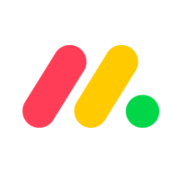The Best Task Management Software of 2025

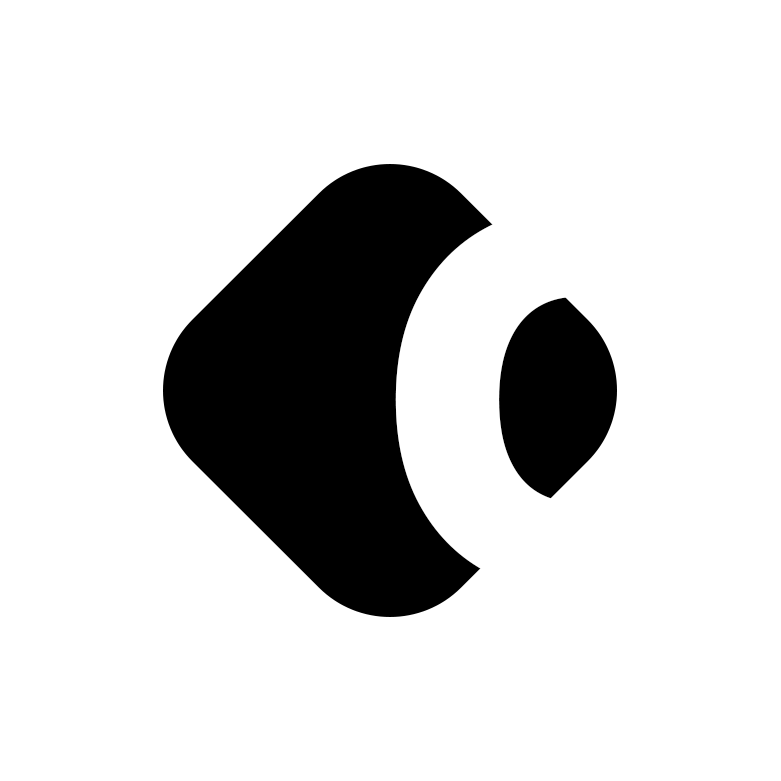
Could the best task management software tools be the key to running a more efficient company?
Effective task management can be quite the challenge in today’s modern world. To ensure projects are completed on time, leaders need to be able to define objectives for team members, assign responsibilities to specific staff, and measure the progress on each task.
For startups, agencies, and fast-growing companies, there are endless loose threads to keep track of, and a number of potential hurdles to overcome. Fortunately, task management software can help.
With task management software, you can keep a closer eye on everything happening in your business, from which teams are falling behind schedule, to which tasks are nearly complete.
The question is, which task management software is best?
The Best Task Management Software Tools
As hybrid work and agile business models continue to thrive, task management tools are becoming an increasingly essential investment. In fact, the industry is set to reach a value of $4.33 billion by 2023.
In this growing market, there are dozens of competitors to consider, each with their own distinct values and benefits to offer. Since every company has its own requirements when it comes to successful task management, it was difficult for us to choose a number one best to-do list tool. That’s why we compiled a list of leading solutions intended to suit a range of needs.
We’ve looked at everything from features, and pricing, to use cases, to bring you this list:
- Monday.com – Most versatile task management software
- ClickUp – Best free plan
- Wrike – Best for reporting
- Smartsheet – Best spreadsheet-like task management software
- Teamwork – Best for scaling teams
- Zoho Projects – Best for Zoho ecosystem users
- Nifty – Best for SMEs
- Paymo – Best for agencies
- Asana – Best complex projects
- Jira – Best for large, agile teams
- Basecamp – Best for remote collaboration
- Trello – Best for boards and cards
- Todoist – Best for individual use
1. Monday.com
The most versatile task management software

Created specifically to help companies from a wide range of industries with their distinct task management needs, Monday.com is one of the most versatile tools on the market. This powerful tool has eliminated many of the complexities of traditional management tools to create a more visually intuitive and engaging interface for modern teams.
Key Features
Monday.com helps companies to focus on the work that matters most to them and manage tasks effectively, with tools like task management boards, messaging boards, and easy-to-read reports.
You can collaborate with your team by assigning deadlines to colleagues, tagging members on tasks, and sharing files. You can even @mention other members of your team for real time and prompt collaboration and better understand how they manage their time with a built-in time-tracking tool.
Monday’s features are constantly evolving, with new features appearing all the time to suit the needs of team and projects. You get access to everything from in-built file storage to automations and custom workflows to take more of the stress away from your teams. You also have the option to organize and view your tasks on a Gantt chart or use a timeline view to get an overview of impending deadlines.
Companies also get peace of mind with in-depth enterprise-grade security and governance on some packages, and access to multi-level permissions.
Integrations
Monday.com can integrate with a host of other crucial productivity tools like Slack, Google Calendar, Google Drive, Jira, Trello, Dropbox, and GitHub. There’s also a connection to Zapier, where you can create a variety of custom links.
Monday.com Pricing
Monday.com is free for up to 2 users, which is perfect if you just need the basics. After that, prices start at $8 per user per month, with a 14-day free trial for beginners.
2. ClickUp
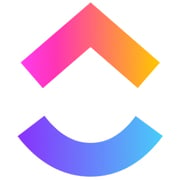
Best free plan

ClickUp aims to eliminate the challenges of managing complex teams and projects with state-of-the-art, and easy-to-use task management software. You can choose how you want to view your to-do list, with calendar, list, and board view options. Plus, there’s access to a centralized repository where you can manage essential business resources and task progress.
Key Features
With a strong focus on ease-of-use and intuitive controls, ClickUp’s feature rich approach to task management ensuresteams of all sizes can work more effectively together. The platform makes it easy to plan projects, schedule tasks, and assign specific deadlines to people in your workforce.
There are task checklists, subtasks, reminders for due dates, and “priorities” when you need people to focus on a specific piece of work. For those who need help assigning to dos, there are also various templates to get you started and help you track tasks and sub tasks. This allows better transparency into the company’s workflow management as well as guides project management teams to organize and prioritize critical tasks.
ClickUp is particularly compelling because it’s customizable. You can create a visual roadmap of your tasks using the timeline view. Your employees can choose how they want to view their tasks and adjust their visual project board according to their needs. There are also plenty of reporting features and analytics to explore, with six built-in reporting types for project progress.
Integrations
ClickUp supports third-party integrations with a host of crucial tools, including Slack, for team messaging, G-Suite, and Dropbox. There are also more than 1000 integrations available through a connection to Zapier, so you’re sure to find something that works for you.
ClickUp Pricing
ClickUp offers a free plan for beginners, with access to all the primary features. The unlimited plan, which allows you to share more content and do more with your team, starts at $5 per user per month.
3. Wrike

Best for reporting

Wrike is one of the better-known tools in the task management landscape, designed to simplify the insights you need into your team’s performance. Trusted by brands like Google and Nickelodeon, Wrike makes it quick and easy to view exactly what your team members are doing each day. You can even color-code tasks based on their readiness.
Key Features
Wrike is a popular and sophisticated task management tool, with built-in essential features like time tracking, to help you manage your contractors and freelancers task progress. The Wrike environment can be customized to suit your needs, with access to a huge range of “status” options for each task.
Wrike includes easy-to-use file-sharing functionality, and a host of leading reporting tools, so you can see behind the scenes of what really makes your employees tick. Additionally, to manage tasks better, Wrike features an online Gantt chart that allows users to create task dependencies and visualize plans with clear timelines and due dates.
If you need to help tracking task progress from individual members of your team, manage recurring tasks, and getting more control over their time, Wrike can help with that too by offering project and individual work schedules for each employee.
Integrations
Wrike’s feature rich task management system can integrate with a host of productivity tools, including Microsoft Project, and Excel to improve efficiency of tasks and projects. There’s also access to a range of automation engine webhooks with custom connections.
Wrike Pricing
There’s a free package available for Wrike, which gives you basic, centralized task management. After that, packages start at $9.80 per user per month with support for up to 200 users and access to advanced features..
4. Smartsheet

Best spreadsheet-style task management software

If you like the idea of a more traditional approach to task management, Smartsheet is a spreadsheet-style task management software, with ease-of-use built-in. The Smartsheet software has already won a number of awards for being one of the most intuitive business apps on the market. This tool is particularly ideal if you’re already comfortable working in Excel, but you don’t want the stress of dealing with formulas.
Key Features
Smartsheet is all about saving you time on frustrating calculations and work projects. You can perform a range of calculations automatically across a range of sheets and add customized brand logos and color themes to individual project pages.
There are a host of great functions and collaboration features built into this tool, including task and subtask scheduling, activities, assigned resources, recurring tasks, and more. Team members can be given instant notifications for any critical changes in their workflows, and the tool provides access to a detailed history, shared views, and activity logs too.
The “Critical Path” features is particularly useful for highlighting all the tasks which have a direct impact on your project completion date, so you can focus on important milestones. Smartsheet also offers access to some fantastic reports and analytics too, with edible summary reports which can be exported into Excel.
Integrations
Third party Integrations for Smartsheet include everything from Microsoft productivity tools to Google apps like Sheets and Docs–all designed to support efficient tracking and monitoring of tasks and projects. There’s also access to Jira, Salesforce, Slack, ServiceNow, Box, Tableau, and a range of other great tools. Plus, you can access webhooks and REST API integrations.
Smartsheet Pricing
Pricing plans for Smartsheet starts at $7 per user per month for a minimum of 3 users, and up to 25 users. There are thirty-day free trials available that gives you access to advanced features..
5. Teamwork
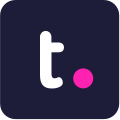
Best for scaling teams

Teamwork is a project and task management software best known for helping agencies, project management teams, and growing companies improve collaboration and accountability. The flexible solution is easy to use and scalable, with all the tools you need to manage the project lifecycle from start to finish.
Key Features
With a wealth of task management features created to make project management quicker and more efficient, Teamwork helps to add structure to the modern workplace. You can manage and optimize team resources from a shared interface, view tasks in a Gantt chart, and create Kanban boards for visualizing project progress.
There are time-tracking tools built into the system, to help you keep track of the time contributed by contractors and freelancers. You’ll also have access to a range of tools to manage tasks such as creating task lists and subtasks, tracking recurring tasks, and breaking major projects into simpler action items for teams.
Teamwork comes with a huge feature set, including access to reports on things like profitability and performance. With so many different tools to keep track of, you may have a learning curve to contend with, but Teamwork is worth the extra effort.
Aside from the central platform, Teamwork users can also access Spaces for document massage, a dedicated Teamwork CRM for sales teams, Chat for video conversations, and the “Desk” helpdesk software too.
Integrations
Teamwork integrates with a wide range of additional tools, including Slack, Dropbox, QuickBooks for profit reporting, HubSpot, and many others.
Teamwork Pricing
There’s a free package available from Teamwork for basic project management and milestone tracking. As for pricing plan and access to advanced featuress, you’ll need at least the first paid tier, which starts at $10 per month to access project templates, time tracking, agile views, and integrated team chat.
6. Zoho Projects

Best for extended Zoho ecosystem users

Zoho Projects is just one of the many tools within the vast Zoho ecosystem, a collection of software solutions built for collaboration, sales, and customer service management. Within Projects, companies can access a cloud-based environment for planning tasks, tracking workflows, and keeping teams aligned wherever they are.
Key features
Zoho Projects has a number of fantastic features for team and project management, including timers, for tracking time spent on certain tasks, Kanban boards, and forums where you can collaborate with your team and chat about tasks. There are social feeds for keeping up-to-date with news, and custom notifications too.
The intuitive user interface in Zoho Projects is probably one of the most compelling parts of this tool. This easy-to-use interface helps you manage tasks and find your way around projects fast. Employees also have the freedom to change themes and designs according to their needs.
There’s access to task automation with Blueprint, so you can upgrade the functionality and efficiency of your team with smart technology, making it so much easier to track and monitor multiple projects.
Zoho also integrates with the huge range of other tools in the Zoho ecosystem, such as Zoho CRM and Zoho Desk, so you can build a comprehensive environment for your team.
Integrations
The most exciting integrations for Zoho are with the wide range of additional Zoho Office tools, designed to help you upgrade your team management. Zoho Projects also integrates with a range of tools like ClickUp, Aircall, and BigTime billing
Zoho Projects Pricing
Pricing starts with a free plan, which includes support for up to 2 projects, a storage space of 10MB and simple task tracking. If you want more functionality, like subtasks, unlimited projects, and project templates, you’ll need at least the $5.50 Premium plan, with an extra $3.26 (est) per client.
7. Nifty

Best for SMEs

Created to help reduce the number of tools and software solutions business leaders need to manage every day, Nifty is a collaborative task management tool, perfect for SMEs. You can use this technology to automate, prioritize, and organize your workflows using Kanban, List, and swimlane views, depending on your employee preferences.
Key Features
The all-in-one Nifty environment comes with an easy-to-use dashboard, where team members can easily see all of their tasks, due dates, as well as a time tracking and reporting feature, various business resources (like documents), milestone achievements, and discussions they’re having with colleagues.
The collaborative environment makes it easier to work with other team members wherever they are, thanks to access to status updates on your team. You can also import existing tasks on other project management tools into Nifty if you need a change and view tasks in a Gantt chart..
The environment comes with goals and timelines, so your employees can see a visual timeline of when certain crucial goals need to be completed.
Nifty has also earned a number of awards for being easy to use, set up, and distribute. Time tracking and document storage functionality are already built-in, so you can avoid having to access various different tools at once.
Integrations
Nifty has an integration with Zapier, so you can easily connect your project management tools to hundreds of other apps. There are also various native integrations available with GitHub, the Microsoft Suite, Slack, Zoom, and Google Drive.
Nifty Pricing
There’s a free package for up to 2 projects and 100mb of storage space. Alternatively, users can access the Starter package from $39 per month, with access to 40 projects, time tracking, custom fields, budget tracking, and unlimited guests or clients.
8. Paymo

Best for agencies

Created especially for the unique workflows of modern agencies, Paymo is great for getting your teams aligned and engaged. You can use Paymo for managing tasks, creating schedules for your individual team members, and tracking time spent on essential work. There’s even the option to bill clients directly from Paymo.
Key features
With a clean and easy-to-use interface, it’s easy to keep track of who’s doing what within your team on Paymo’s kanban style visual task management system. Task management boards come with access to drag-and-drop cards, so you can easily move your tasks between different “status” sections.
You can organize and prioritize task lists as well as sub tasks, due dates, milestones, and offers advanced task management filters to help you keep track of details of your day-to-day work. Users can also schedule activities and monitor real-time task progress.
Paymo comes with time tracking functionality built-in, and an integrated online timer to help contractors and freelancers with tracking their work. There are static and live updating time reports, and a customizable report builder, for insights into your analytics.
Paymo even has its own in-built invoicing and payment management tools, so you can access transactions within your project management app.
Integrations
There are various third-party integrations available for Paymo, including Google Apps, Appy Pie, Google Calendar, Slack, QuickBooks and Zapier, for thousands of web connections.
Paymo Pricing
There’s a free version of Paymo available for up to 10 users and 100 tasks. You’ll have access to native time tracking and unlimited projects with this package. The first paid package starts at $9.95 per user, per month, with no user limit.
9. Asana
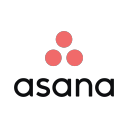
Best for complex projects

Asana is a task management tool with access to automation, rule-building, and various other workplace management capabilities. The phenomenal timeline function on Asana makes it easy to see how the pieces of various projects fit together. You’ll also be able to customize and organize tasks for teams and projects, however you choose with color-coding to manage multiple to-dos efficiently.
Key Features
Asana’s easy-to-use but comprehensive interface is one of the most compelling parts of this software. The rich and inviting user interface of this task management tool can provide everything from insights into team productivity, to playful automations which help your team to celebrate finishing a task.
The easy-to-use timeline technology makes it easy to see how work maps out in your business over time. You can also use convenient drag-and-drop boards to focus on the tasks currently at hand, with access to cloud-stored resources whenever your team needs them.
As a project management tool, Asana’s automations are particularly useful for reducing the risk of error, and keeping your team focused on the challenges that really matter. You can also design forms so it’s easier for team members to submit work requests and provide details on the work they’ve done.
Integrations
One of the most flexible task management tools on the market for team collaboration and multiple projects, Asana integrates with more than 200 other tools, including Slack, Google Drive, Jira cloud, Dropbox, EverHour, OneDrive, Microsoft Teams, and a host of other essentials.
Asana Pricing
A free basic version of Asana allows for access to unlimited tasks for small business users. You can see an unlimited activity log, use unlimited messages, and collaborate with up to 15 team members. The first paid package under their pricing plan starts at $10.99 per month, with a workflow builder, timeline, advanced search, and various other features.
10. Jira

Best for large, agile teams

Created to support complex teams in today’s evolving modern world, Jira software keeps developers in mind. Designed by Atlassian, this task management platform promises an effective way for business leaders to plan essential projects and track the work that gets done with absolute visibility. You can even create your own automated workflows.
Key Features
Built for software development teams, Jira helps companies to track everything happening in your business across various iterations. You can identify potential roadblocks holding back creativity, focus on constant improvement, and minimize errors.
Jira comes with easy-to-use Kanban boards, so you can plan exactly which tasks need to be done and present them to your teams in a visual format. Cards come pre-configured for both Kanban and scrum designs. There’s also access to time tracking and historical tracking, as well as sprint planning.
All the must-have features for managing tasks and staying on top of due dates are included in Jira, including overviews of backlogs, roadmaps, and capacity planning sessions. You can also access pre-built automation workflows, or design your own from scratch.
Integrations
Unsurprisingly, Jira works well with other Jira tools, so you can run all aspects of your business through the same platform. There are also integrations to a host of additional tools, like Invision, AdobeXD, LucidChart, Github, Slack, Trello, and Microsoft Teams.
Jira Pricing
Jira’s pricing plans start at around $7 per month per user, with the opportunity to scale as much as you like. There’s also a Premium package at $14 per month, and Enterprise custom pricing.
11. Basecamp

Best for Remote Collaboration

Basecamp is one of the most popular task management tools on the market today, offering a convenient way for business leaders to manage their freelance and remote workers. Basecamp helps to keep the entire team organized in one space, so everyone can operate more smoothly, regardless of where your team might be located.
Key Features
Basecamp is all about simplifying your workflows for better team collaboration. You can access everything from message boards, where you can post announcements and notifications, to to-do lists, and schedule updates. There’s support for storing documents and files in the cloud, and automatic check-ins, so you can keep up with your team regular and recurring tasks without pestering them.
Because Basecamp is available as a mobile app on both iOS and Android, the group chat functionality built into Basecamp is great for remote teams who need help keeping track of everyone on the team. You can also allow your team members to set their own hours for availability.
The task management platform also benefits from a diverse selection of views for different people in the team. You can create and assign tasks with ease, and there’s an individual “My Stuff” menu, where you can see everything on your plate as a team member. Alternatively, Managers can quickly pinpoint overdue tasks and team members who are falling behind.
Integrations
There are plenty of third-party integrations available for Basecamp, including Time Doctor for time tracking, Akita, Taskclone, Slickplan, Doorbell.io, and many others. There’s even access to Zapier integrations, so you can build a more advanced range of connections depending on your needs.
Basecamp Pricing
Basecamp has one of the most transparent pricing plans available. The Business package is available for a $99 per month flat fee, with no limitation on users. There’s also Basecamp Personal, which is free to use for up to 20 users and 3 projects.
12. Trello

Best for boards and cards

If you like the idea of managing tasks using Kanban boards and drag-and-drop cards, then you’ll love Trello. This easy-to-use tool is all about Kanban functionality, making it easier for companies to visualize their projects, and see their progress towards various goals using a visual board view. You can organize your entire workflow into as many projects columns, and cards as you like.
Key Features
Built with a focus on easy drag-and-drop functionality, Trello makes it easy to keep track of all kinds of projects. You can create and assign tasks to team members, complete with attached files, create checklists, and add comments to tasks. There’s also the option to tag members on cards and columns, and link to files in external locations. File sharing on Trello is also simple and striaghtforward.
Task planning using the Trello board view is highly customizable and allows businesses to annotate cards and add labels for quick identification. While there are more advanced tools out there, Trello is extremely useful for people who want to get on top of their tasks quickly and is available via mobile app on both iOS and Android.
Features like the “Power-Up” allows companies to add a range of integration and new features to boards, including social media, custom fields, document management, calendar views, and even time tracking.
Integrations
Trello easily integrates with a variety of essential tools, including Slack, Jira, and Adobe XD. With Trello Power Ups, you can add the functionality of these add-ons and integrations into your cards and columns, so they’re easier to use.
Trello Pricing
Among all the free task management software plans, Trello’s free version is pretty limited, allowing only up to 10 boards per workspace. Their paid pricing plans however are very affordable, starting at $5 per user per month.
13. Todoist
Best for individual use

Todoist is one of the most straightforward tools for task and project management on the market today. Providing a simple and convenient interface for sharing, creating, and prioritizing tasks, Todoist ensures you can get more done on a daily basis. Although this tool is great for small teams, it’s also fantastic for individual users.
Key Features
Todoist provides a simple interface that allows you to prioritize your workflow and collaborate with your team. The technology is ideal for individuals in a fast-paced work environment who need to keep track of everything from recurring tasks to meeting agendas and upcoming projects. Easy file-sharing methods can also support better collaboration and workflow management.
Essential features include the option to access both work and personal “to-do” lists in the same place, keep track of your calendar, and even access intelligent tools to make life management easier. For instance, features like the rescheduling tool suggest optimal times for scheduling tasks, which may need to be pushed to a future date based on past behavior and what you’ve got to do already.
Todoist works across a wide range of tools to manage multiple projects and teams, including a mobile app on iOS and Android, Windows, and MacOS, so team members can use it anywhere. There’s also access to a comprehensive help center on the Todoist website, where you can get tips on how to use your software more effectively.
Integrations
To support better team collaboration, Todoist integrations include access to everything from Google Drive to Dropbox, Google Maps, Calendar, Slack, Zapier, and countless other options. Developer API access is available for custom connections. Time tracking is available with a Time Doctor integration.
Todoist Pricing
A free basic plan of Todoist is available, but the majority of features can only be accessed on the premium plan, starting at $29 per user per year.
Task Management Software Buyers Guide
What is task management software?
Task management software is a suite of applications designed to help team members stay on top of essential projects. More than just a digital to-do list, these tools make it easier to see which tasks are most essential with priority insights and deadlines.
The software also ensures business leaders can assign specific tasks to certain members of tasks and keep an eye on their projects in real time.
According to a study from ClickUp, around 42% of Americans feel they don’t have all the tools and technologies they need to succeed at work. Task management tools provide teams with more control over the way they manage their workflow.
Many of the leading task management tools even come with the option to integrate with other essential technology in the workplace, such as collaboration tools like Slack, or CRM systems. The right task management software:
- Improves collaboration: Task management tools make it easier for employees to keep track of what they’re doing in relation to other team members and connect with colleagues.
- Enhances workflow: Business leaders and individual users can keep track of the progress made with various tasks and focus on the most important tasks first.
- Improves productivity: With task management tools, teams distributed all around the world can closely track team productivity and offer extra help to employees when they need it.
What to Look for in the Best Task Management Software
As mentioned above, the best task management software for your needs will depend on a number of factors, including what kind of team you’re running, and what sort of tasks you need to keep track of. Some of the most important things to look at when choosing task management software include:
Learning curve
Though all new technology will take some getting used to for your team, the right task management tool should have the smallest possible learning curve. You need your team members to comfortably use the technology available to them.
Communication features
Having communication features built into your task management tool ensures you can collaborate with your team and work together effectively wherever they are. To manage tasks better, look for things like chat, forums, and even video conferencing in your task management software.
User interface
A great user interface with a visual, intuitive layout is crucial for a strong task management tool. Your employees should be able to easily track their progress in various tasks, and see which tasks are most important at a glance.
Integrations
The best task management tools need to integrate with other tools to provide your teams with a convenient, single-pane-of-glass for productivity. Make sure your chosen tool integrates with the app you use every day.
Pricing
Although there’s more to a great task management tool than a budget-friendly price, it’s important to ensure you can afford the package you choose. Take note as well that while there are free task management software available, these will likely have limited functionalities and features.
Frequent updates
As the marketplace continues to evolve, make sure the features in your task management tool are evolving too.
Task Management Software FAQ
Q: What Is The Best Software For Task Management?
The best task management software will depend on a number of factors, including how you prefer to track your workflow (through Kanban boards, lists, and calendars), organize tasks, and what kind of specialist functionality you need. The right tool needs to be easy to use, affordable, and brimming with features that make your team more efficient.
Q: How Do I Use Task Management Tools?
Task management tools are relatively straightforward software solutions. You can use these tools to list all the projects your team members need to work on in a given time and assign them to individual team members. You’ll also be able to give each task a deadline and track its progress.
Q: Why Do You Need Task Management Software?
Task management software is a crucial part of streamlining your operations and increasing productivity in today’s complex work environment. With so many tasks, responsibilities, and duties to keep track of, it’s easy for things to slip through the cracks. Task management tools ensure you organize tasks and keep everyone on the right page.
Choosing your Task Management Tool
The best task management software is an important investment in the success of your business. With the right tools, companies can ensure their employees have all the guidance they need to thrive, no matter where they might be working from.
A good task management tool helps to make you more productive and efficient as a team, while ensuring individual team members stay motivated and focused.
Which solution will you choose? Let us know in the comments below.
Related Products
